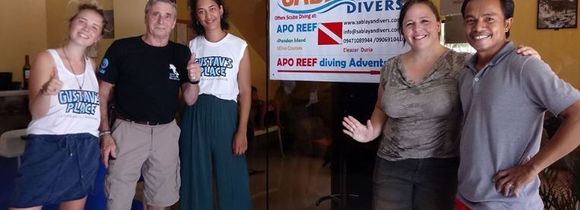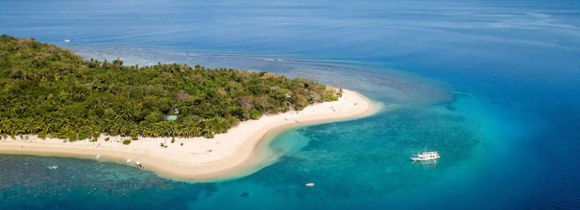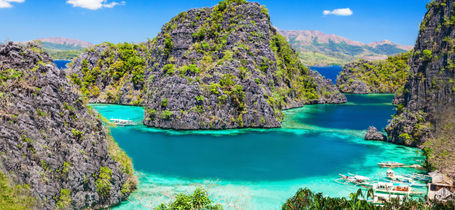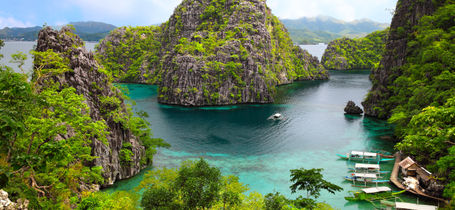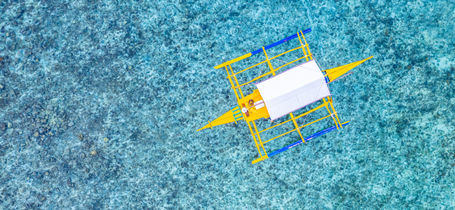Mindoro Diving
Mindoro has over 75% of all known coral species in its sparkling waters - with diversity like that, what diver wouldn’t love to dive here? For the advanced diver, it is a veritable playground - it has penetrable wrecks, deep drift dives and stunning walls. Meanwhile, beginners will adore the beautifully sloping reefs with their kaleidoscope of fish and macro critters.
Diving in Mindoro
Diving in Mindoro Island is divided into Puerto Galera and Verde Island in the relatively developed north, and Apo Reef and Pandan Island to the South West. Apo Reef, not to be confused with Apo Island, is the biggest coral reef in the Philippines and the second biggest in the world.
Puerto Galera is the most popular resort because of the easy transport links and varieties of diving. The shallow reefs and shore entries make it perfect for beginner dive courses. There are also several dive resorts and dive centres to choose from so it can suit more budgets.
Some of the diving here, particularly Verde Island and most of Pandan Island is better suited to more advanced divers due to the deep water and strong currents.
Best time to dive
Diving in Mindoro is possible all year round, the air (and water) temperature rarely drops below 26oC. November - May is the dry season and the best time for diving as the seas are calmest. The hottest months, between March and July, have the hottest temperatures and the best visibility. It is also the busiest time of year, especially at weekends and on public holidays.
The monsoon season from June to October has more unpredictable weather. Strong winds and heavy rains can prevent dive boats and liveaboards from operating. Typhoons are not a big problem as the island is relatively protected.
Types of diving
Reef diving in Mindoro is some of the best in the world as it includes the second largest reef in the world - Apo Reef. Impressive walls and drop-offs surround Verde Island, sure to keep thrill-seekers happy in sites such as “The Washing Machine”. There are caves, canyons and wrecks to explore too.
Liveaboards are a great way to see all the dive sites as many of them are remote, most leave out of Puerto Galera, Manila or Anilao. Dive courses are popular in resort towns like Puerto Galera (lots of dive centres) due to the gentle currents and shallow reefs.
What to see
With its huge variety of coral species, it only makes sense that marine life is as impressive. Huge amounts of reef fish can be found here, making it a haven for underwater photographers. Moray eels, trumpet fish, mantis shrimp, parrotfish, octopus, cuttlefish, Moorish idol, batfish, emperor fish, scorpionfish, tuna and trevally are all visible at almost every site.
The macro life is very impressive. The sharp-eyed may spot one of the 200 different varieties of nudibranch. Pygmy seahorses hide in the sea fans and tiny glass shrimp burrow in the anemones.
The deep waters and strong currents that surround many of the dive sites bring in large pelagics. Common sightings include reef sharks, eagle rays, devil rays and turtles. If you’re lucky, you might even spot whale sharks, manta rays and hammerhead sharks.
Best places to dive
Puerto Galera: The Canyons and The Hole in the wall have lots of little caves to explore and shelter from the current on this excellent drift dive for the experienced. Sabang Wrecks let you explore a few sunken artificial reefs.
Verde Island: The currents here bring in stunning visibility and marine life. Enjoy the exhilarating drift at sites like “The Wall” and “The Washing Machine”.
Apo Reef: A very healthy reef, famous for its abundant life and steep drop-offs into 400m+ water. The drift can be strong but brings pelagic encounters with it.
Pandan Island: Has a few lovely beginner dives accessible from the shore. Barracuda Deep is a deep wall facing into the South China Sea where you can see huge schools of fish, eagle rays and barracuda reaching up to 1.5m.
